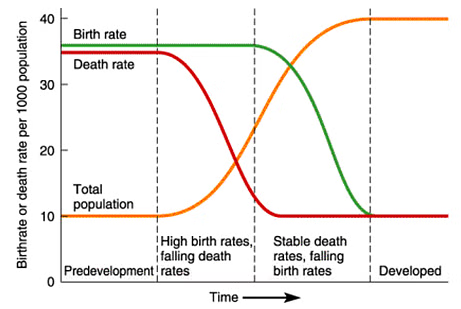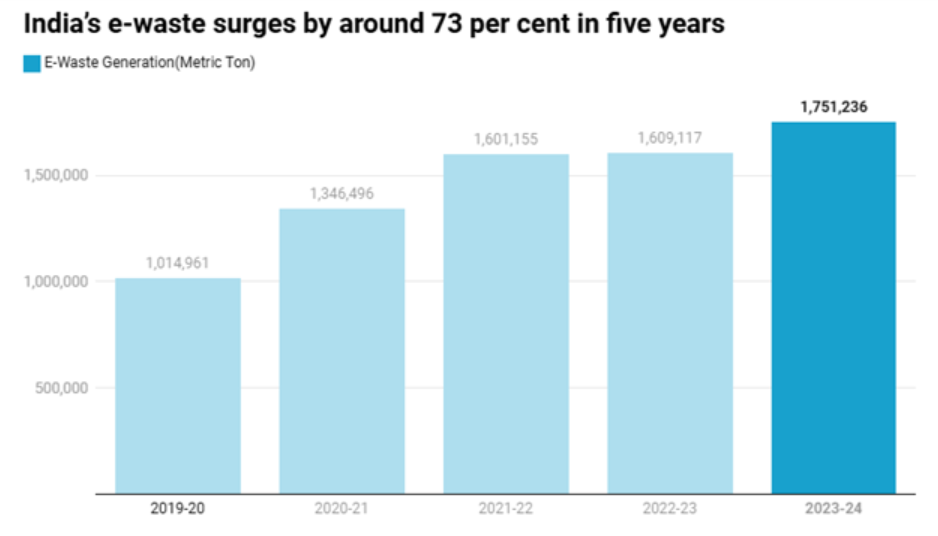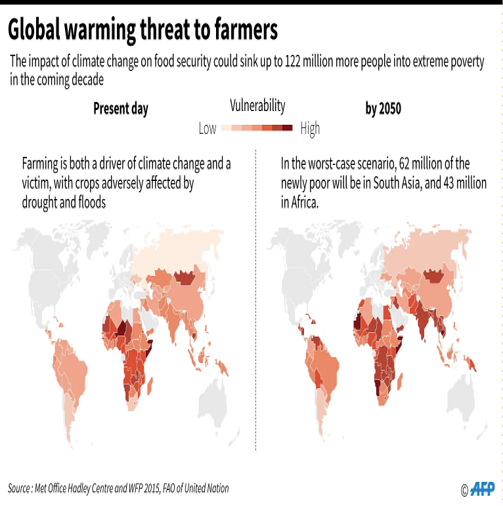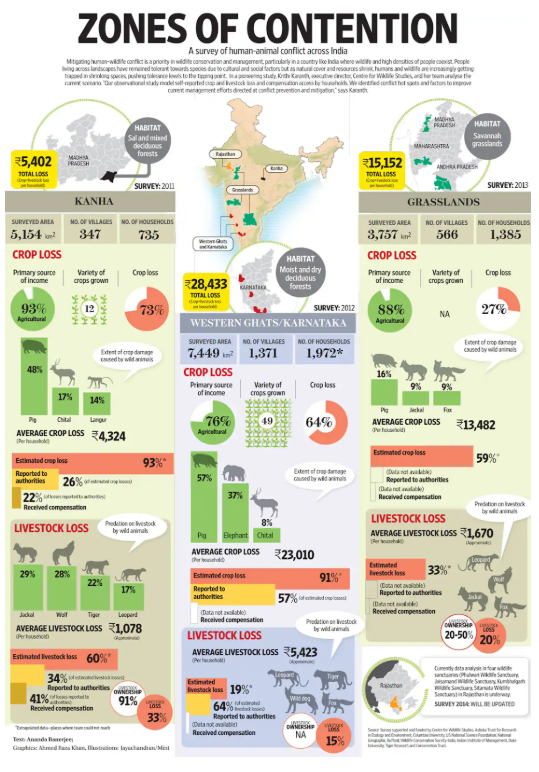24 Jan to 10 Feb, 2025
RAT HOLE MINING
Why in news : The rat-hole mining tragedy in Assam's Dima Hasao district, where nine miners were trapped after a flood in an illegal coal mine, highlights the persistent dangers of unregulated mining despite existing bans.
About :
Mining is a cornerstone of economic development, providing essential raw materials for industries, infrastructure, and energy production. As a key driver of industrialization, mining supports sectors like steel, cement, and power, while also posing challenges related to environmental sustainability and socio-economic equity.
Geomorphological Aspect of Mining
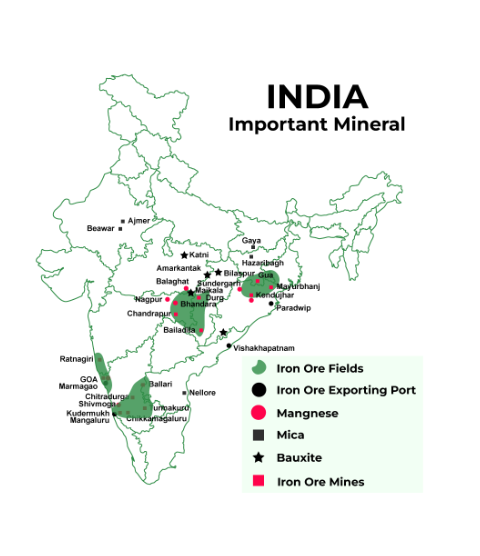
- The Chota Nagpur Plateau, rich in coal, iron ore, and bauxite, is a prime example of how ancient geological formations and tectonic activity have concentrated minerals in this region. The Deccan Plateau, formed by volcanic activity, hosts significant deposits of basalt, manganese, and limestone. The Himalayan region, shaped by tectonic collisions, contains valuable minerals like copper, lead, and zinc, while coastal plains are key sources of heavy minerals like ilmenite and monazite.
- Tectonic activity, weathering, and erosion have further influenced mineral distribution. Eg. the weathering of basaltic rocks in the Deccan Plateau has led to the formation of bauxite deposits in Odisha and Andhra Pradesh. Similarly, erosion in the Damodar Valley has exposed coal seams, making it India’s primary coal-producing region.
Climatic Influence on Mining Activities
- Climate significantly impacts mining operations in India, particularly due to its monsoon-dependent economy. Heavy rainfall during the monsoon (June-September) disrupts extraction and transportation, especially in regions like Odisha and Jharkhand.
- Extreme weather events like floods and droughts further strain mining infrastructure. The 2019 floods in Karnataka’s Bellary district damaged iron ore mines, while prolonged droughts in Rajasthan’s zinc mines have increased water scarcity, raising operational costs
- Moreover, mining contributes to global warming through its carbon footprint. India’s coal mining sector alone emits over 1.5 billion tonnes of CO2 annually.
Offshore and Coastal mining
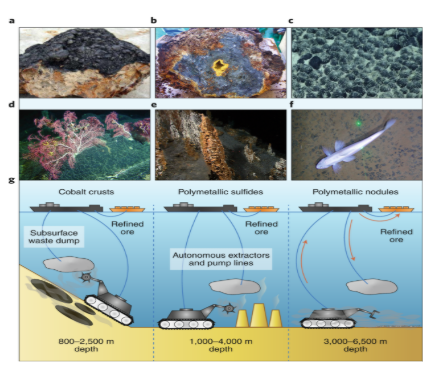
- India is actively exploring polymetallic nodules in the Central Indian Ocean Basin, allocated by the International Seabed Authority (ISA). However, deep-sea mining poses significant challenges:
- Environmental implications: Disruption of fragile deep-sea ecosystems, including biodiversity loss and sediment plumes affecting marine life.
- Technological and financial barriers: High costs and limited technology for sustainable extraction.
Regulations:
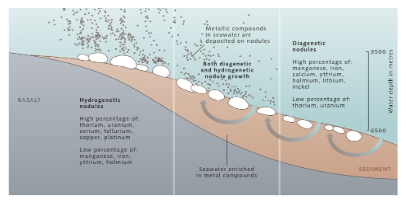
- The Coastal Regulation Zone (CRZ) Notification, 2019, restricts mining activities within 500 meters of the coastline to protect ecosystems.
- The Offshore Areas Mineral (Development and Regulation) Act, 2002, governs offshore mining, emphasizing environmental safeguards and sustainable practices.
Environmental Impact of Mining
- Deforestation and habitat destruction: Hasdeo Arand forests in Chhattisgarh, a biodiversity hotspot, face deforestation due to coal mining.
- Soil erosion and land degradation: Mining in the Aravalli Range has caused severe soil erosion, reducing agricultural productivity and increasing desertification.
- Disruption of biogeochemical cycles: Acid mine drainage from coal mines in Meghalaya has contaminated water bodies, affecting aquatic ecosystems.
- Impact on flora and fauna: Mining in the Western Ghats (a UNESCO World Heritage Site) has endangered endemic species like the Malabar civet and lion-tailed macaque.
- Restoration efforts: Initiatives like the Green Mining Initiative aim to reclaim mined areas through afforestation and soil stabilization. For example, the reclamation of mined lands in Singrauli (Madhya Pradesh) has restored over 1,000 hectares of degraded land.
Migration Patterns and Labor Dynamics in Mining Regions
- In Chhattisgarh, coal mining in regions like Korba has led to an influx of migrant workers from states like Bihar and Uttar Pradesh, resulting in overcrowding and inadequate housing. A 2021 report by the Indian Bureau of Mines highlighted that over 30% of mining labor in India consists of migrants, often working in informal and precarious conditions.
Issues of Child Labor, Occupational Health, and Safety
- Mining in India often exploits vulnerable populations, including children, and poses significant health risks. In Rajasthan, child labor is prevalent in sandstone and marble mining in districts like Kota and Bundi, where children work in hazardous conditions for meager wages. According to a 2022 report by Human Rights Watch, over 70,000 children are employed in mining activities across India, often exposed to respiratory diseases and injuries.
Role of Mining in Regional Development and Infrastructure Planning
- Mining can drive regional development by funding infrastructure projects and creating jobs. In Jharkhand, coal mining has funded the development of railways, roads, and towns like Ranchi and Dhanbad, though benefits are unevenly distributed.The Coal India Limited (CIL) initiative has contributed to infrastructure development in mining regions, but challenges like displacement and environmental degradation persist.
Challenges of Sustainable Development in Mining-Intensive Regions
- In Goa, iron ore mining has caused deforestation, water pollution, and loss of biodiversity, leading to protests by local communities and a Supreme Court ban in 2018.
|
Rat-Hole Mining
Methods of Extraction
Example: In Meghalaya, rat-hole mining persists despite a 2014 NGT ban, with incidents like the 2018 Ksan mine tragedy (15 workers trapped in a flooded mine) highlighting its dangers. |
|
Biomining
Key Processes
Metals Extracted
Advantages
Example: Used in Chile for copper extraction and in South Africa for gold recovery. |
Legal Framework for Mining in India
1 Mines and Minerals (Development and Regulation) Act, 1957 (MMDR Act):
- Governs mineral exploration, extraction, and regulation.
- Key amendments: Auction-based allocation (2015), District Mineral Foundation (DMF) for local development.
- National Mineral Policy (2019): Focuses on sustainable mining and transparency.
2. Environmental Regulations:
- Environmental Impact Assessment (EIA): Mandatory for mining projects.
- Forest Conservation Act (1980): Clearance required for mining in forest areas.
- Air and Water Acts: Ensure pollution control and waste management.
3. Role of Government and Private Sector:
- Government: Regulator and facilitator; PSUs like Coal India Limited (CIL) dominate coal mining.
- Private Sector: Key player in non-coal minerals; encouraged through e-auctions and FDI (up to 100% allowed).
4. International Collaborations and Best Practices:
- Partnerships with countries like Australia and Canada for technology transfer and sustainable practices.
- Adoption of global standards: UN Sustainable Development Goals (SDGs), ICMM (International Council on Mining and Metals) guidelines.
- Focus on green mining, reclamation, and community engagement.
5. District Mineral Foundation (DMF):
- Established under MMDR Act (2015 amendment): Mandatory in mining-affected districts.
- Purpose: Address socio-economic and environmental impacts of mining.
- Funding: Contributions from miners (10-30% of royalty).
- Utilization: Funds used for healthcare, education, infrastructure, and livelihood projects in mining-affected areas.
6. Pradhan Mantri Khanij Kshetra Kalyan Yojana (PMKKKY):
- Launched in 2015: Framework for DMF fund utilization.
- Focus Areas:
- High Priority: Drinking water, healthcare, education.
- Other Priorities: Infrastructure, environment conservation, welfare of women/children.
Conclusion
Mining in India drives economic growth but faces challenges like environmental degradation and social inequity. A balanced approach integrating sustainability, economic development, and community welfare is crucial. By adopting advanced technologies, enforcing stricter regulations, and prioritizing community engagement, India can ensure sustainable mining, aligning with global resource needs and environmental goals.
Source :
https://www.thehindu.com/news/national/understanding-rat-hole-mining-explained/article67588357.ece
Where to use?
Paper II ( Geography Optional ) : Minerals and Resources
Paper I ( General Studies ): Significance of Minerals .
AGROFORESTRY’S IMPACT TO ENDEMIC FROGS
Why in news : A recent study by the Nature Conservation Foundation (NCF-India) and the Bombay Environmental Action Group (BEAG) assessed the impact of agroforestry on endemic frog species in the northern Western Ghats.
About:
Agroforestry is a land management system that combines trees with crops, livestock, or both, on the same piece of land. It focuses on increasing benefits to the landowner as well as maintaining forest integrity and environmental health.
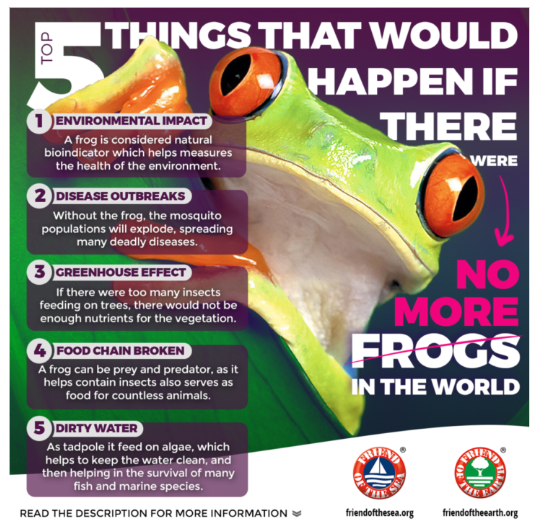
Impact of Agroforestry on Frog Species in the Western Ghats
1. Decline in Frog Diversity and Population
- A study published in Ecological Applications reveals that agricultural expansion, including agroforestry practices like mango and cashew orchards, has negatively impacted frog populations in the Western Ghats.
- Orchards were found to have the fewest frogs overall, while paddy fields showed the lowest diversity of frog species.
- Rare species like the CEPF Burrowing Frog (Minervarya cepfi) and the Goan Fejervarya (Minervarya gomantaki) were particularly scarce in these altered habitats.
2. Loss of Critical Microhabitats
- Agroforestry and other agricultural practices threaten important microhabitats such as rock pools, which are crucial for the survival of frog eggs and tadpoles during dry spells.
- The destruction of these microhabitats disrupts the life cycle of many frog species, leading to population declines.
3. Altered Frog Communities
- Common frog species like Minervarya syhadrensis were found in paddy fields, indicating a shift in frog communities due to farming practices.
- This shift suggests that agroforestry and agriculture are favoring more generalist species while pushing out rare and specialized frog species.
4. Threats from Pesticides and Fertilizers
- Runoff from agricultural lands, including agroforestry areas, often contains harmful pesticides and fertilizers, which degrade water quality.
- Frogs, being highly sensitive to environmental changes, are particularly vulnerable to these pollutants, further endangering their populations.
5. Impact on Endangered Species
- The Amboli bush frog, an endangered species, faces significant challenges due to land-use changes, including agroforestry practices.
- Agroforestry has led to altered microhabitat use and skewed sex ratios within frog populations, exacerbating their decline.
6. Broader Ecological Implications
- The decline of frog populations due to agroforestry and agriculture reflects larger ecological issues in the Western Ghats, a global biodiversity hotspot.
- Amphibians serve as key indicators of environmental health, and their decline signals broader ecosystem degradation.
Conclusion :
The study emphasizes the importance of collaborating with local communities to address habitat loss and climate challenges. Integrating traditional knowledge with modern conservation practices can help balance agricultural expansion with biodiversity preservation.
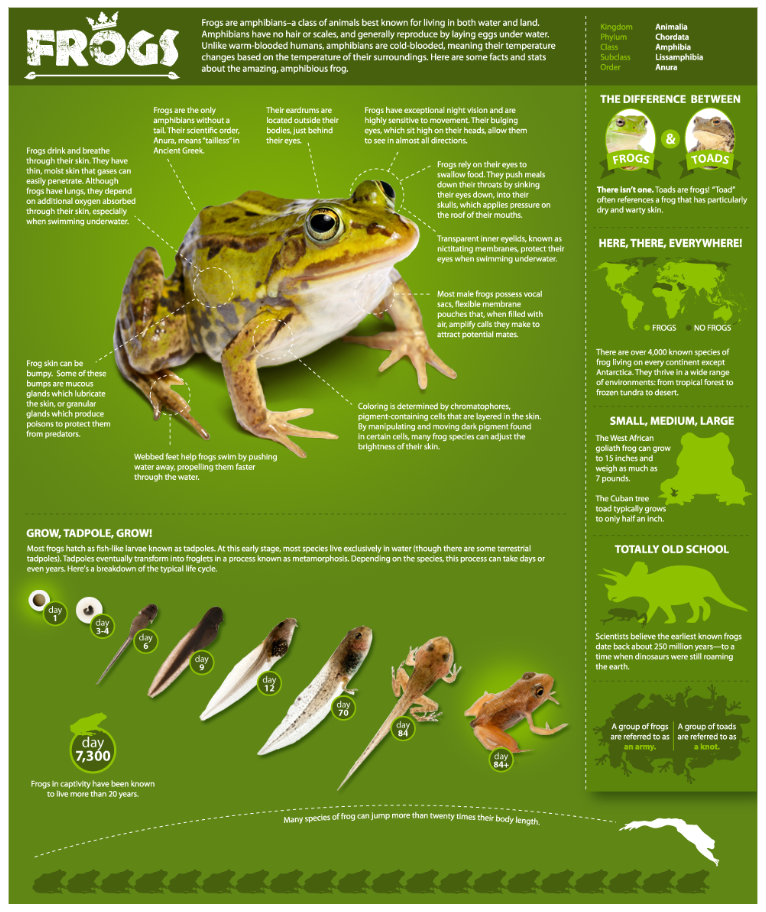
Source :
Where to use ?
Paper III ( General Studies ) : Environment Conservation and Environment Degradation
TRIBAL MINISTRY’S DIRECTIVE ON FOREST RIGHTS ACT, 2006
Why in news : The Ministry of Tribal Affairs has directed states to establish Institutional Mechanisms to ensure compliance with the Forest Rights Act (FRA), 2006, in tiger reserves.
About :
Key Highlights of the Recent Directive By Tribal Ministry
1. Legal Recognition of Forest-Dwelling Communities
- The Ministry has emphasized that forest-dwelling communities cannot be evicted without recognizing their rights under the Forest Rights Act (FRA), 2006, and the Wildlife Protection Act, 1972. In Madhya Pradesh, tribal communities near the Kanha Tiger Reserve reported forced evictions without proper recognition of their forest rights.
2. Consent for Relocation
- Section 4(2) of the FRA mandates that the free, informed, and written consent of Gram Sabhas must be obtained before relocating forest-dwelling communities.
3. Reporting on Tribal Villages in Tiger Reserves
- States are required to submit detailed reports on tribal villages located within tiger reserves and the status of their forest rights claims.
4. Grievance Redressal Mechanism
- States have been instructed to establish grievance redressal systems to address complaints related to evictions and forest rights violations.
5. Balancing Conservation and Community Rights
- The ongoing debate revolves around reconciling tiger conservation efforts with the rights of forest-dwelling communities.
- While relocation is often necessary for conservation, it must be carried out in compliance with the FRA to avoid violating the rights of indigenous populations.
Challenges in Implementing the Forest Rights Act (FRA), 2006
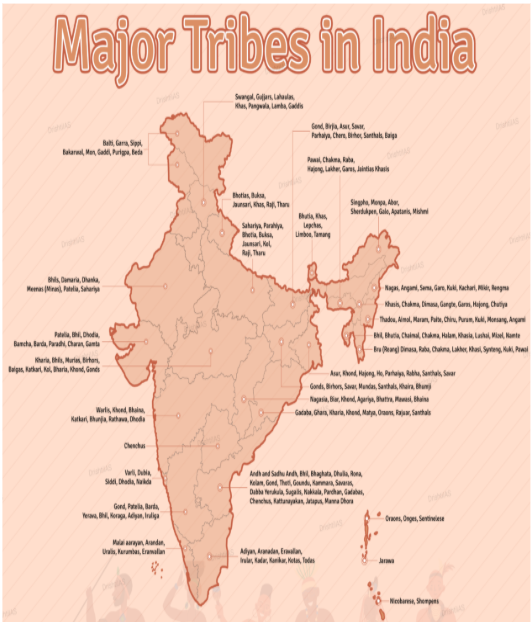
- 1. Lack of Recognition of Individual Rights : In Assam, shifting cultivation practices complicate rights recognition, while in Maharashtra's Gadchiroli district, community forest lands face diversion threats despite progress in rights recognition.
- Conflicting Legislations : FRA often clashes with the Indian Forest Act, 1927, and the Wildlife Protection Act, 1972, creating ambiguities. Officials prioritize traditional forest governance over FRA mandates.
- Underperforming Gram Sabhas
- Gram Sabhas often lack capacity, resources, and training, leading to ineffective implementation.
- Local elites dominate decision-making, marginalizing vulnerable groups.
- Eviction and Development Conflicts
- Despite FRA, large-scale projects like mining, dams, and highways lead to evictions.In Odisha, the Dhangadi Dam project displaced tribal communities without proper rehabilitation or consent.
Source:
Where to use :
Paper II ( Geography Optional ) : Forest Rights and Tribal issues
Melanism
Melanism: A genetic condition causing an increased production of melanin, resulting in dark pigmentation in animals or plants. It is the opposite of albinism and often provides survival advantages, such as better camouflage.
Replacement Level
Replacement Level: The fertility rate required for a population to replace itself from one generation to the next, typically around 2.1 children per woman. It ensures population stability without growth or decline.
Landlord Port
Landlord Port: A port where the land and infrastructure are owned by a single entity (the "landlord"), while operations are leased to private companies. This model separates ownership from operational management.
Acid Mine Drainage
Acid Mine Drainage: A harmful environmental phenomenon where acidic water drains from mining sites, often containing toxic metals. It occurs when sulfide minerals react with air and water, polluting nearby ecosystems.
Electrokinetic Technology
Electrokinetic Technology: A method used to remove contaminants from soil or water by applying an electric field. It separates and extracts pollutants like heavy metals through processes such as electrophoresis and electroosmosis.
GLACIER MELTING ( DOOMSDAY )
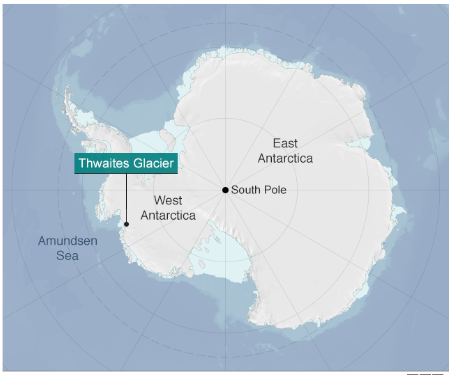
- Located in West Antarctica, it is roughly the size of Florida and plays a significant role in global sea level rise. The glacier covers an area of approximately 192,000 square kilometers (74,000 square miles), making it one of the largest glaciers in the world.
- The glacier covers an area of approximately 192,000 square kilometers (74,000 square miles), making it one of the largest glaciers in the world.
- Thwaites Glacier contains enough ice to raise global sea levels by about 65 centimeters (25 inches) if it were to completely melt.
- The primary driver of Thwaites Glacier's instability is the influx of warm ocean The melting of Thwaites Glacier could contribute to climate feedback loops, such as changes in ocean circulation patterns and increased absorption of solar radiation by darker ocean waters, leading to further warming.
Source: https://www.antarcticglaciers.org/2020/07/thwaites-glacier/
Where to use ?
Paper III ( General Studies ) : Global Warming Impact
Places in News - 10 February 2025
1. Simlipal Tiger Reserve
Why in news : The Odisha Forest Department has arrested 4 poachers belonging to the Lodha tribe for the illegal hunting of a rare melanistic tiger in Similipal Tiger Reserve (STR), Odisha.
About :
- Located in the northeastern part of Odisha, India, within the Mayurbhanj district.
- Several rivers flow through the reserve, including the Budhabalanga, Kharkai, and Salandi rivers.
- The vegetation includes sal trees, teak, bamboo, and various types of shrubs and medicinal plants.
- Approx : Mayurbhanj
2. Bankapur Wolf Sanctuary:
Why in news : Bankapur Wolf Sanctuary, Karnataka’s first wolf sanctuary witnessed the birth of eight pups of an Indian grey wolf.
About :
- The Bankapur Wolf Sanctuary, located in the Haveri district of Karnataka, is a dedicated habitat for the Indian grey wolf.
- The sanctuary is located within the ruins of the Bankapur Fort, which was built during the rule of the Chalukyas and later controlled by the Bahmani and Adil Shahi dynasties.
- Approx : Haveri
3. Nhava Sheva
Why in news : Jawaharlal Nehru Port Authority (JNPA) or Nhava Sheva Port is set to become India’s first port to achieve a global ranking by handling 10 million TEUs (Twenty-Foot Equivalent Units) per year by 2027.
About :
- Nhava Sheva, officially known as Jawaharlal Nehru Port (JNPT), is India's largest and busiest container port.
- JNPT is a key part of India’s Sagarmala Initiative, which aims to modernize port infrastructure and improve maritime trade efficiency.
- Approx : Mumbai
4. Dima Hasao
Why in news : The rat-hole mining tragedy in Assam's Dima Hasao district, where nine miners were trapped after a flood in an illegal coal mine, highlights the persistent dangers of unregulated mining despite existing bans.
About :
- Dima Hasao is a hilly district in the state of Assam, India.
- Dima Hasao Autonomous Council (DHAC) was established under the Sixth Schedule to provide self-governance for indigenous communities.
- It is known for eco-tourism, with attractions like Jatinga (famous for bird migration mystery) and Maibang (historic capital of the Dimasa Kingdom).
- Approx : Karbi Anglong
5. Rushikulya
Why in news : The Olive Ridley turtles are expected to return in large numbers to the Rushikulya River mouth in Odisha for their mass nesting, a vital occurrence for the conservation of this species.
About :
- Rushikulya River , one of the major rivers in Odisha, India is well-known for its ecological importance, particularly as a crucial nesting site for the Olive Ridley sea turtles.
- It passes through Ganjam, Kandhamal, and Gajapati districts.
- It provides water for agricultural and domestic use in Ganjam district.
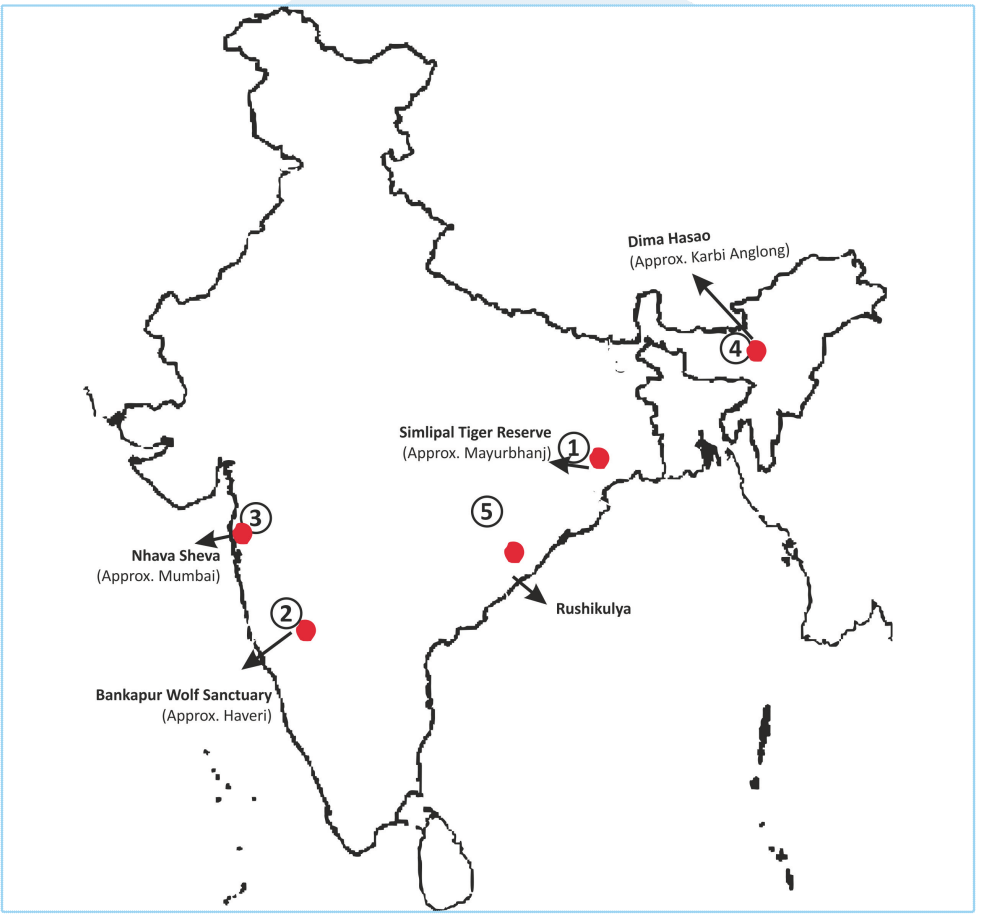
Fortnightly KOSMOS MCQs Practice - 10th February 2025
Q1. Consider the following features:
- They are referred to as Koonj in India.
- They are native to the Siberian region of Russia.
- The first reserve for them in India is located in Khichan, Rajasthan.
Which of the following species is best described by the above characteristics?
(a) Greater Flamingos
(b) Indian Peafowl
(c) Whooper Swans
(d) Demoiselle Cranes
Q2. Which of the following statements about the Indian grey wolf is/are correct?
- The Indian grey wolf is distributed throughout Southwest Asia and the Indian subcontinent.
- It mainly hunts during daylight, being a diurnal species.
- The IUCN has classified the Indian grey wolf as Endangered.
- Bankapur Wolf Sanctuary in Karnataka is India's second area dedicated exclusively to wolf conservation, following Mahuadanr Wolf Sanctuary.
Select the correct answer using the code given below:
(a) 1 and 4 only
(b) 1 and 2 only
(c) 1, 3, and 4 only
(d) 2 and 3 only
Q3. Consider the following statements features:
- It is situated within the Deccan Peninsula Biogeographic Zone.
- It mainly consists of moist mixed deciduous forests, with areas of tropical semi-evergreen vegetation.
- It has been acknowledged as part of the Global Network of Biosphere Reserves since 2009.
- It is noted for the successful resurgence of mugger crocodile populations along the Khairi and Deo rivers.
Which of the following protected areas is best described by above characteristics?
(a) Kanha Tiger Reserve
(b) Similipal Tiger Reserve
(c) Bandipur Tiger Reserve
(d) Tadoba-Andhari Tiger Reserve
Q4. Consider the following statements:
- The area is bordered by Arunachal Pradesh to the northeast, Manipur to the south, Assam to the west and northwest, and Myanmar (Burma) to the east.
- The region is extensively carved by rivers, including the Doyang and Dikhu in the north, the Barak in the southwest, and the Chindwin River tributaries in the southeast (in Myanmar).
- It experiences a monsoonal (wet-dry) climate.
Which of the following states best matches the above description?
(a) Arunachal Pradesh
(b) Nagaland
(c) Mizoram
(d) Manipur
Q5. Consider the following statements related to Fonio Millet:
- It is traditionally grown by the Fulani tribes.
- It can be grown in arid and semi-arid areas and needs minimal water.
Which of the statements given above is/are correct?
(a) Only 1
(b) Only 2
(c) Both 1 and 2
(d) None
Q6. Consider the following statements regarding Kokborok language:
- It is acknowledged as the official language of Tripura and is mainly written in the Bengali script.
- Rajratnakar, a history of Tripuri kings, was originally written in Kokborok and Koloma scripts.
Which of the statements given above is/are correct?
(a) 1 only
(b) 2 only
(c) Both 1 and 2
(d) Neither 1 nor 2
Q7. Global Risks Report sometimes seen in news is released by which of the following organisations?
(a) International Monetary Fund (IMF)
(b) The World Economic Forum (WEF)
(c) World Trade Organization (WTO)
(d) World Health Organization (WHO)
Q8. With reference to National Turmeric Board, consider the following statements:
- It is the sixth product-specific board under the Ministry of Commerce & Industry, following tea, coffee, rubber, spices, and tobacco.
- It is the only board led by the Minister of Commerce & Industry.
Which of the statements given above is/are correct?
(a) 1 Only
(b) 2 Only
(c) Both 1 and 2
(d) Neither 1 nor 2
Q9. With reference to the Mayotte island, consider the following statements:
- It comprises two islands from the Comoros archipelago: the main island, Pamandzi, and the smaller island, Mayotte.
- It is the least wealthy territory within both France and the European Union.
Which of the statements given above is/are correct?
(a) 1 only
(b) 2 only
(c) Both 1 and 2
(d) Neither 1 nor 2
Q10. Consider the following statements :
Statement-I: Soft corals are species that do not create large calcium carbonate skeletons necessary for the formation of coral reefs.
Statement-II: Corals are invertebrates from the class Anthozoa, phylum Cnidaria.
Which one of the following is correct in respect of the above statements?
(a) Both Statement-I and Statement-II are correct and Statement-II is the correct explanation for Statement I
(b) Both Statement-I and Statement-II are correct and Statement-II is not the correct explanation for Statement-I
(c) Statement-I is correct but Statement-II is incorrect
(d) Statement-I is incorrect but Statement-II is correct
Share the article
Edukemy’s Current Affairs Quiz is published with multiple choice questions for UPSC exams
MCQ
Get Latest Updates on Offers, Event dates, and free Mentorship sessions.

Get in touch with our Expert Academic Counsellors 👋
FAQs
Geography Current Affairs focuses on the contemporary issues, events, and developments in the field of geography. It covers recent geographical phenomena, environmental changes, geopolitical shifts, and related news. This differs from regular geography studies which may focus more on foundational concepts, historical contexts, and theoretical frameworks.
Updates are provided regularly to ensure that subscribers stay informed about the latest developments in geography. Typically, updates are provided on a fortnightly basis, depending on the frequency of significant events and changes in the field.
Absolutely. Geography Current Affairs serves as a valuable resource not only for Geography optional but also for GS papers, especially GS Paper 1 (covering Indian Heritage and Culture, History, and Geography of the World and Society) and GS Paper 3 (covering Technology, Economic Development, Biodiversity, Environment, Security, and Disaster Management). It aids in building a holistic understanding of various topics and strengthens answer-writing skills by incorporating contemporary examples and perspectives.
Geography Current Affairs holds immense importance for UPSC preparation, particularly for aspirants opting for Geography optional. It helps candidates stay updated with the latest developments, geographical phenomena, environmental issues, and geopolitical shifts worldwide, aligning them with the dynamic nature of the subject as tested in the UPSC examinations.

